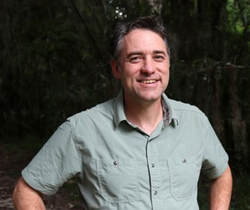With the support of a $1 million grant from the National Science Foundation, UF/IFAS researchers have initiated a five-year study to investigate potential causes underlying increasing tree mortality at five forests in the United States.
The rate of tree mortality has been increasing around the globe. Forests cover over 30% of the world’s land area, are crucial for carbon storage, and are home to the majority of land animals. When we think of tree mortality, catastrophic events like fires and insect outbreaks come to mind. However, most trees die alone slowly over years and for reasons that are not always obvious.

“Climate change and globalization threaten to further increase the rate of tree mortality. But we don’t yet understand the timing, causes and scale of where it’s happening,” said Dan Johnson, assistant professor of silviculture at the UF/IFAS School of Forest, Fisheries, and Geomatics Sciences (SFFGS). Johnson and collaborators plan is to gather enough data on the ground in conjunction with remote sensing to build scalable models of tree mortality with underlying factors associated with tree death.
This project builds upon observations on five distinct forests across four National Ecological Observatory Network (NEON) sites. At each site, tens of thousands of trees have been mapped and are measured every five years by the Smithsonian Institution’s Forest Global Earth Observatory (ForestGEO). The scientists will visit each of the five sites annually to collect on-the-ground-data and unoccupied aerial vehicle (UAV) remote sensing data.

Johnson is leading the project along with fellow SFFGS faculty: Eben Broadbent, assistant professor of forest ecology and geomatics, and Carlos Alberto Silva, assistant professor of quantitative forest science. Collaborators Kristina Anderson-Teixeira, from the Smithsonian Institution’s Conservation Biology Institute, and James Lutz, from Utah State University, will be coordinating activities at their local forests; and other collaborators include David Orwig of Harvard Forest and Sean McMahon of the Smithsonian Environmental Research Center. The project will provide students with hands-on experience with integrating field-based measurements and remote sensing.
“Currently, there is not enough high-resolution, large-area ground truth data paired directly with remote sensing data,” said Johnson. “We’re hoping to provide the solid foundation to build better models to understand the causes and consequences of tree mortality and advance artificial intelligence in the field.”
 0
0
